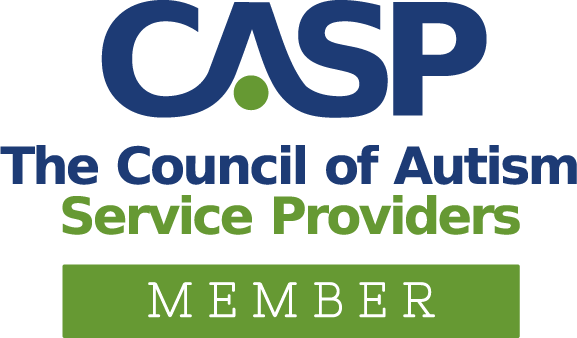Routines and autism: Routines are beacons of familiarity and order in a world that often seems to spin in unpredictable patterns. For most of us, adhering to set schedules provides stability, allowing us to navigate our days comfortably. But for individuals living with Autism Spectrum Disorder (ASD), the significance of routines transcends the realm of ordinary habit. Routines and autism depend on an individual’s cognitive and sensory experiences.
Imagine a life where the world appears as a mosaic of puzzling sensations, where the simplest of transitions can feel like traversing a labyrinthine maze. For many individuals with autism, their sensory perceptions can make uncertainty challenging.
The subtle hum of fluorescent light, the textures of unfamiliar clothing against their skin, the loud sounds in a crowded room – these seemingly innocuous elements can bombard their senses with overwhelming intensity. In such a world, routines emerge as guiding constellations, offering a predictable path through the sensory storms that might otherwise trigger anxiety and distress.
At ABA Centers of America, we care about making individuals on the spectrum feel safe. The first step to helping those with ASD is compassion and understanding. This article will address routines and autism, their importance, how to adjust them, and their value in navigating the uncharted waters for those who need it.
Why Routines and Autism Go Together
The adherence to routines that seem constricting for others is a hallmark of autism spectrum disorder. They provide a structured framework that helps reduce anxiety and stress, offering a precise sequence of events that individuals can anticipate. Their predictability can be immensely comforting, especially for those who may struggle with sudden changes or novel situations due to the cognitive and sensory processing differences common in autism.
Routines provide safety to those on the spectrum. By following plans, they are sure to avoid unexpected harsh stimuli that can cause anxiety. They serve as self-regulation tools by providing a familiar context that helps individuals understand and navigate their emotional states, providing a degree of control that makes it easier to avoid or cope with overwhelming situations.
At a neurobiological level, research has shown that individuals with autism often have differences in neural connectivity and processing. These can lead to difficulties in processing and responding to sensory information, changes in routine, and social cues. Patterns act as a form of cognitive scaffolding, offering a familiar sequence of actions that don’t require the same level of rapid and complex decision-making as novel situations might. This predictability can help individuals on the spectrum navigate their daily lives with greater confidence and reduced stress.
Benefits of Routines for Individuals with Autism
The benefits of routines for individuals on the autism spectrum are many and can positively impact various aspects of their lives, such as:
1. Reduced Anxiety: Routines provide a sense of predictability, which can alleviate anxiety and uncertainty, helping individuals with autism feel more in control of their environment. If individuals on the spectrum know how their day will go, they will find its stimuli and challenges more manageable.
2. Improved Transitioning: Individuals with autism often struggle with transitioning from one activity to another. Routines offer a clear transition structure, making these shifts smoother and less distressing.
3. Enhanced Focus: Routines can facilitate sustained attention and focus, as individuals know what to expect and can engage more fully in their tasks.
4. Skill Development: From basic self-care tasks like brushing teeth to more complex activities like engaging in social interactions, habits offer consistent practice and reinforcement. This repetition can lead to improved skill mastery and independence.
5. Independence: Routines promote self-sufficiency and independence by enabling individuals to complete tasks without constant external guidance.
6. Regulated Sensory Experience: Routines provide a familiar context that helps regulate sensory processing, reducing sensory overload and meltdowns. When individuals on the spectrum know what they will be eating, wearing, seeing, and hearing, they are less likely to suffer anguish and emotional breakdowns.
7. Communication and Social Interaction: Routines can serve as communication cues for individuals with limited verbal abilities, providing structured opportunities for social interactions while facilitating communication and engagement.
Establishing Routines for Individuals with Autism
Creating and implementing effective routines for individuals with autism requires a tailored approach that considers their unique preferences, needs, and sensory sensitivities. Here are some steps to consider when establishing routines:
1. Observe and Assess: Note the individual’s preferences, strengths, and challenges. This process will help you identify the activities and tasks to incorporate into the routine.
2. Start Small: Begin with a simple routine that includes activities the individual enjoys and feels comfortable with. Gradually introduce new activities or tasks to expand it.
3. Visual Supports: Many individuals with autism benefit from visual supports such as visible schedules, timers, and checklists. These tools represent the routine, making it easier to understand and follow. Don’t hesitate to get creative and add design flourishes based on your neurodivergent loved one’s interests.
4. Predictable Transitions: Incorporate clear cues for transitioning between activities. Visual or auditory cues can signal that an action is ending and another is beginning.
5. Flexibility: While routines are crucial, some flexibility is also essential. Life can be unpredictable, and individuals should learn to cope with minor routine changes. This fact cuts both ways; whenever trying to establish a new routine, allow room for exploration.
How to Ensure a Routine’s Success with ABA Therapy
Many of the techniques described above are part of Applied Behavioral Analysis (ABA), the most effective therapy that teaches individuals with ASD how to cope with the world, learn skills, have conversations, maintain daily upkeep, and succeed. Supported by decades of research, ABA therapy effectively integrates its principles into routine-building and adaptation processes. Here’s how:
1. Task Analysis: ABA breaks down complex skills into smaller, manageable steps. Apply this principle to routine tasks. For instance, if the routine involves brushing teeth, break it down into steps like wetting the toothbrush, applying toothpaste, brushing, rinsing, etc. After some repetition, the process requires little thought and becomes routine.
2. Prompting and Shaping: ABA utilizes prompting to guide individuals through desired behaviors. Apply these techniques to routine tasks by providing cues or instructions that help the individual complete each step successfully, nudging them until they can do it alone. Fun social stories are an excellent way to get an individual interested in a task and shape their attitudes.
3. Reinforcement: Positive reinforcement is a cornerstone of ABA. These include verbal praise, tokens, a snack, or access to something the individual enjoys upon completing tasks. Use reinforcement strategies within routines to encourage healthy behaviors.
4. Generalization: ABA emphasizes transferring skills to various settings and situations. When establishing routines, ensure the skills transfer to other contexts and situations. For example, tying one’s shoelaces applies not only on schooldays but whenever going out.
5. Data Collection: ABA relies on data collection to track progress. Similarly, monitor the individual’s engagement and success with the routine. Adjust the routine based on data to maximize its effectiveness.
ABA Centers of America and Forging Better Routines
If you have a loved one on the spectrum, ABA Centers of America is here to help. By understanding each individual’s unique needs and preferences, caregivers, educators, and therapists can create and adapt routines that contribute to the well-being and progress of those on the autism spectrum. ABA Therapy accomplishes this while ensuring your child learns in a compassionate environment where our board-certified therapists will respect their strengths and dignity.
Call 844-923-4222 or reach out online for a free consultation to begin your ABA journey today.







